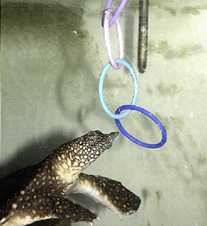
In 2013 BEVA commissioned a report on work-related injuries among equine practitioners. The findings revealed that being an equine vet was one of the highest-risk civilian occupations. This shocking revelation made many of us sit up and take note, and saw a subtle but tangible movement begin, with increasing interest in equine behaviour and how it impacts our day-to-day veterinary work. The same can be said for small animals too, where previously accepted ways of restraining patients have become less popular, in favour of methods that take into account a better understanding of emitted behaviour and how behaviour can be shaped by employing techniques aligned with learning theory.
In the equine industry, until fairly recently it was largely accepted that you couldn’t make a horse do anything with brute force; however, trickery and tactic akin to bullying were commonplace. Once more effective and humane techniques started receiving the limelight, it became clear there were better, safer and more effective ways to achieve compliance.
Until fairly recently it was largely accepted that you couldn’t make a horse do anything with brute force; however, trickery and tactic akin to bullying were commonplace
The first breakthrough I experienced as a first opinion ambulatory vet was when I was heavily pregnant and trying to take a blood sample from an old, Cushingoid, 12hh pony. It was quickly evident I was not going to succeed, regardless of my own vulnerable condition, so I abandoned and asked a stronger, more experienced colleague if they would come back and try another day. My colleague came armed with our most well-respected technician who had unflappably dealt with highly strung racehorses for years. Needless to say, they too abandoned the pursuit after reducing the field shelter to firewood and nearly losing one’s forehead to a front hoof.
I returned to this pony a year or so later, having studied BEVA’s Gemma Pearson-starring Don’t Break Your Vet video on needle-shy horses. In the middle of the field I employed the technique and within minutes was able to vaccinate and blood sample the pony without anyone holding him. Thereafter, I repeated this on any needle-shy horse I came across, with 100 percent success.
| You can check out our behaviour and equine columns for more tips on safety, welfare and compliance in vet visits |
It is clear that we have persistently misunderstood horse behaviour, and in the process have not only compromised their welfare but also endangered ourselves needlessly. Where increasing force is used on horses, it invariably serves to compound and intensify the aversive behaviour, which is either making matters worse for yourself or those who come after you. As such, it is not justifiable to persist with outdated methods, when some very simple education is available with which you can achieve the skills to do things better.
The sea of change with regard to equine behaviour is not just happening in the veterinary world. It can be seen across the equine industry, from leisure horse owners to professional competitors. Various training techniques have passed in and out of fashion, which has given some the impression that they are nothing but fads. However, there have been improvements made with considerable investments where safety and social licence are at stake.
Horse-racing made changes to jump colours based on scientific evidence which demonstrated what was seen most clearly by horses. Dressage and eventing have regularly introduced rules which attempt to minimise unethical training methods and equipment which may cause unnecessary harm to the horse. The way horse sports are viewed by the public has been a topic of much debate, with the increasing discussion of social licence to operate. All who participate in and are involved with the use of horses must now pay close attention to the welfare and needs of the animals involved. And rightly so, of course.
All who participate in and are involved with the use of horses must now pay close attention to the welfare and needs of the animals involved. And rightly so, of course
There have been warning signs for some time that the use of animals in sport (let alone entertainment) would be brought into question. In 1982, Norway banned the whip in racing, and in 2022 Sweden did the same. Also in 2022, South Australia voted to ban jump racing, while in Wales, over 35,000 people signed a petition to ban greyhound racing, which was met with demand for an investigation into other animal-related sports. Similar calls have been made in Scotland during this time.
It would appear that animal welfare is rightly being considered a priority by many. The question is how far the use of animals in sport will continue to be regarded as ethical?
Does a greater understanding of animal behaviour allow us to better judge what is acceptable and what is not? It is surely the key to retaining such sports and leisure activities (if we want to). If we can better understand what is best for our animals, then we can justify our involving them in those activities, which give us humans so much pleasure.











